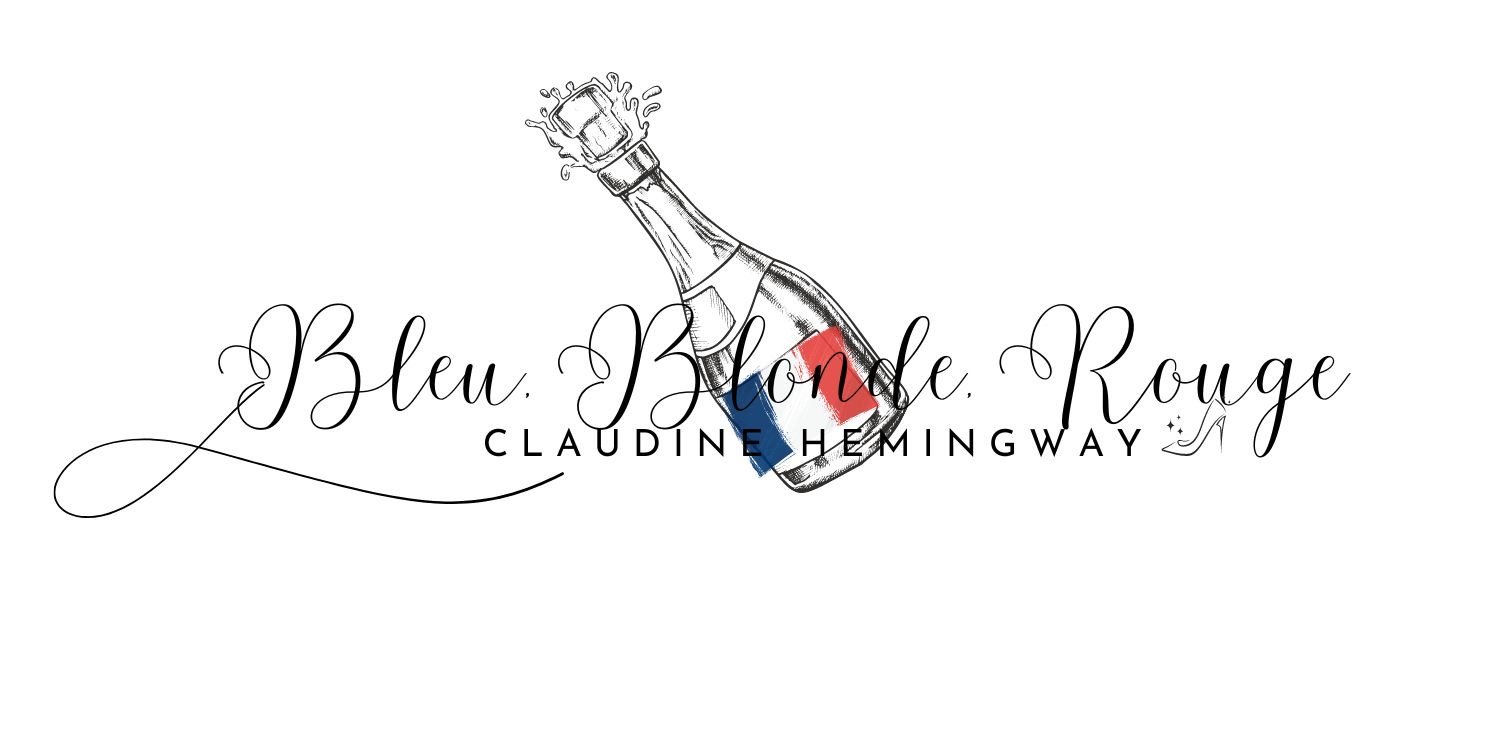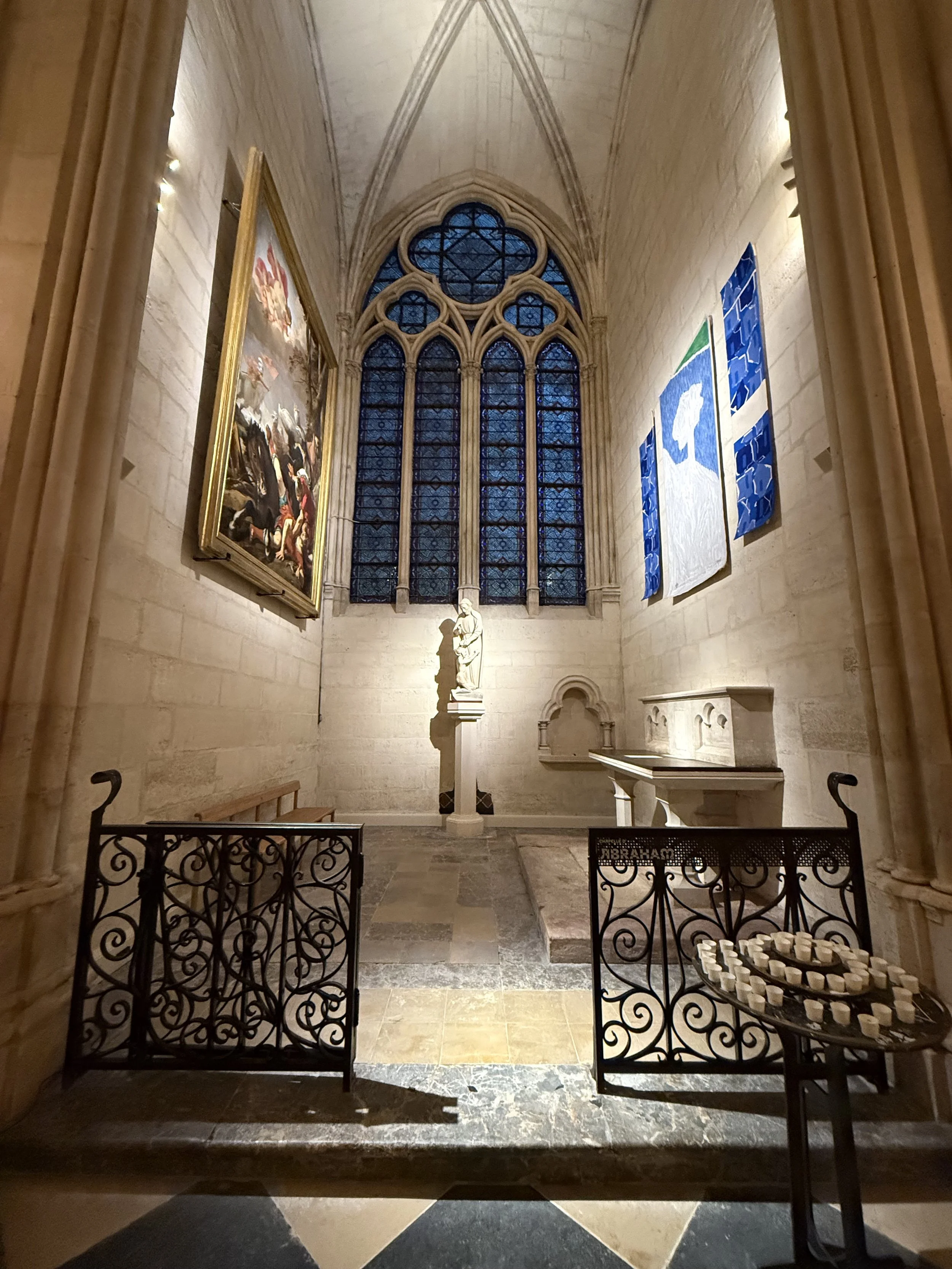Over the last eight centuries, the chapels of Notre Dame have been christened with a new name with each restoration. Chosen by the Diocese and led by Bishop Ulrich, the new layout of Notre Dame includes a path through the key figures of the Old Testament.
Announced in November, seven new tapestries incorporating the new theme of the Old Testament have been ordered for the North chapels. Bishop Ulrich chose two artists, Mallorcan Miquel Barceló and English but Kenyan-born Michael Armitage.
Barceló, born in 1957, is an abstract artist who incorporates light and unusual materials into his work. His work has been seen in the Louvre in 2022 at the Still Life exhibit. Armitage, born in 1984 in Kenya, incorporates his upbringing with traditional Kenyan patterns into his art.
Each artist will create a cartoon, which the extraordinary weavers will use to bring the tapestries to life. Each piece will incorporate a Bible verse from its designated chapel and be woven by one of three manufacturers: the national workshops of the Gobelins and Beauvais and the private Aubusson. It will take five to six years to complete all seven.
Life of the Virgin tapestries Gobelins and Beauvais 1638-1657 14 large tapestries that once hung in Notre Dame and commissioned by Cardinal Richelieu and Michel Le Masle, his steward and later canon and cantor of Notre Dame in 1629. After the vow of Louis XIII and the building of a new altar, the idea of a gift of the tapestries tells the life of the virgin. Originally it was 4 then it grew to 14 and took 20 years to complete.
Three artists, Philippe de Champaigne, Jacque Stella, and Charles Poerson designed the cartoons. Robert de Cotte, architect to Lous XIV, sold them to the Strasbourg Cathedral, and are on display during the Christmas Advent season.
The many government buildings of France open to the public once a year on the third weekend of September. I first visited the Manufacture des Gobelins in the 13th arrondissement in 2018, and I still think about all the fantastic things I saw—the Gobelins date back to the 15th century to Jehan Gobelins, who dyed wool for weaving outside of Paris. Later, his son purchased a property on the edge of Paris. In 1662, under the orders of Louis XIV, Colbert purchased the property and expanded the facility to include goldsmiths, cabinetmakers, casting foundries, upholsters, and engravers. Today, the Gobelins are a part of the Mobilers Nationale, which houses the official furniture used in government buildings and a few of the most historic pieces in French history.
A visit includes a walk through the” fish bowl,” a large room filled with huge looms and natural light used to weave tapestries and rugs. But the most impressive thing is the rooms filled with yarn in every color under the sun to match pieces dating back to the 14th century. On this special weekend, these amazing craftsmen and women are on hand to display their craft and watch firsthand how they weave or repair these pieces.
Following the fire of Notre Dame, a forgotten piece of history was discovered rolled up and pushed away in a large box under some benches. It was a grand carpet that lay in the choir to baptize a prince.
At the Gobelins, the carpet was unrolled, dried, frozen, and deprived of oxygen to kill insects. They were pleased to see the carpet was in very good shape except for a few dark spots. Named the Drap d'Or (cloth of gold), the carpet dates back to 1825 when King Charles X had it commissioned to be placed in the church when he was in attendance for mass. Created from the cartoons of Jacques Louis de Saint-Ange, the carpet went through a few changes before it was ever finished.
Saint-Ange design included a white cross with the French coat of arms in the center, the monogram of Charles X. Fleur-de-Lis, and the necklace of the order of St Michel and the Holy Spirit encircled the coat of arms. Golden vines with grapes wind around the cornucopias with a neo-classical reliquary on the lower portion. Around a large candlestick are miters, other church attributes, and the symbols of the four evangelists. At the top, an eagle of St John, the angel of St Matthews, the Lion of St Marc, and the Ox of St Luke
On July 7, 2022, the carpet restoration by a highly skilled group of masters began. The natural light streams into the large room with looms and massive windows, and they work for endless hours on each detail of the treasured carpet. The carpet weighs over a thousand pounds, and a dozen men need to lift and shift it just a few more inches. Luckily, the carpet was in fantastic shape after the fire. However, at one point, the lower portion was glued to the canvas with fish skin adhesive in the 19th century and hardened, making it impossible to get a needle through, but it should be finished by the start of 2025.
Until the new tapestries were finished, the Gobelins, Beauvais, and Aubusson created an exceptional loan of six tapestries to Notre Dame to fill the northern chapels.
Two tapestries by Henri Matisse are high above the first chapel dedicated to Noah and the Creation. Matisse began creating pieces from paper cut-outs in 1941. Inspired by his time in Tahiti, he made the Diptyque Polynesia, the Sky, in 1946. The Beauvais manufacturer created the first woven tapestry in 1964, ten years after Matisse’s death. Since then, four more versions have been crafted, including the 1971 version hanging in Notre Dame.
The second chapel is dedicated to Abraham and the theme of blessing. The tapestries of painter Pierre Buraglio of The Oak of Mamré with Giotto & Au Rex continue the bright blue theme with a touch of spring green. Buraglio was born in 1939 and creates pieces by cutting up his paintings and those of his relatives for new compositions to triangles.
In Au Rex, the long, skinny pieces of eight blue envelopes were torn to create the image. In the center, the artist purchased Oak of Mamré with Giotto in 1999—the watercolor and pencil canvas of a single tree against a blue sky. The three pieces were woven by the Beauvais workshop between 1992 and 2019.
The tapestry by Franco-Chinese artist Zao Wou-Ki is found in the second chapel, Moses and the theme of Freedom. Composition 1982 is woven with twenty-one colors and took five years to create. Wou-Ki was born in China in 1920 and moved to Paris in 1948, where he lived in Montparnasse. He became friends with Pierre Solange and Nicolas de Stael. His work includes contemporary pieces as well as portraits. The sea of dark blue in this tapestry is beautiful in person.
The fourth chapel was named for Isaiah and the dedication of service. Stepping away from the blue theme for the first time is the stunning Shroud no 2 by Mario Prassinos. Born in Constantinople in 1916, Mario’s family fled to France in 1922. From 1974 to 1975, Prassinos explored the theme of the Shroud of Christ. The Beauvais purchased Shroud no 2 in 1986, two years after his death, and from 1987 to 1990, crafted this large tapestry out of cotton and wool. I loved this one, although each one is stunning in its own way.
The fifth chapel is dedicated to David, King & poet, and the theme of Prayer. The tapestry found here was created by Dom Robert, a Benedictine monk and artist. Born Guy de Chaunac-Lanzac in 1907, he became an ordained priest in 1937. A chance meeting with artist Jean Lureat encouraged him to explore the art of tapestry, which we should be very happy about.
In Laudes, Dom Robert uses seedlings to represent the morning Monastic prayer. The colors are quite different from any other tapestries featured in Notre Dame. The added butterflies give it a touch of golden colors and whimsy. A museum dedicated to Dom Robert’s tapestries can be visited in Sorèze and is now high on my list,
The last tapestry is in the Chapel of Solomon and is dedicated to Wisdom. We started the chapels with the well-known Matisse and ended with Georges Braque. Matisse heavily influenced Braque, who focused on tapestries in the last two years of his life. Composition l’Oiseau was woven in 1968, five years after Bracque’s death.
The temporary tapestries will remain in Notre Dame until at least 2030










